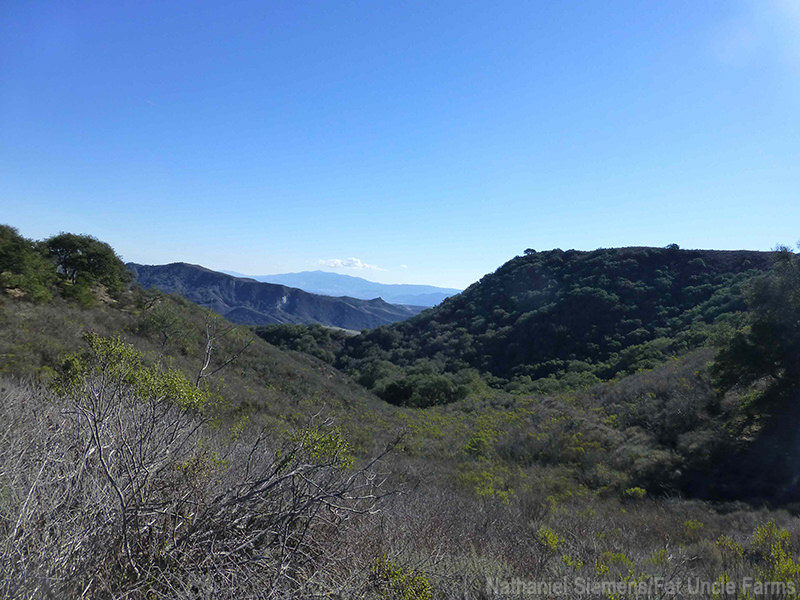

A third-generation almond farmer, Nate Siemens takes pride in sustainably growing almonds the ways his grandfather did back in 1963. He and his wife, Bekki, own Fat Uncle Farms, an 18-acre orchard in California’s San Joaquin Valley. Six years ago, Siemens’ business took a new turn when he began selling specialty almonds in flavors like Coconut with Honey, Cinnalmond, Rosemary and Lemon Pepper. Now you can find his almonds in more than 15 farmers’ markets and specialty stores in the Santa Barbara area.
Almond Joy

Perhaps you, too, are considering almonds for your own orchard. A gregarious farmer and jack of all trades, Siemens is a wealth of information about this hugely popular and profitable nut. If you can’t visit him yourself at market or at his 100-acre ranch in Lompoc, Calif. (more on that below), glean a few of his almond growing and eating tips below.
1. Growing Almonds
Grow almonds anywhere you can grow cherries or apricots, but don’t expect to a harvest for about two to three years. Most species require hot dry summers and relatively short winters, but don’t despair if you live in a colder clime: Check with your local nursery to for Ukrainian varieties that tend to be hardier to cool temperatures.
2. Soak ’Em
Almonds are a healthy, savory snack, packed with protein, fiber and omega-3 and -6 fatty acids. Most people are aware of their health benefits and how to incorporate almonds into a healthy diet, but few are aware that soaking almonds can unlock more health benefits and make them easier to digest. Soaking almonds increases the amount of nutrients and vitamins your body absorbs from the food, making it a simple and effective way to improve this healthy nut.
3. Bees, Please
If you’re preparing to plant some almond trees on your property, don’t neglect your pollinators. Bees play an extremely important role in almond production, as almonds need pollination for fruiting to occur. Honey from the same bees can also be used to make honey-roasted almonds.
Not Quite a Beach Getaway

In 2013, Fat Uncle Farms expanded their operation to a 100-acre working ranch at the edge of the Pacific, about 2½ hours from the almond orchard. The Siemans reside there in a 1920s ranch house, growing a mix of grains and beans and raising animals in a holistic rotational system. In the past year, they turned separate ranch-hand quarters into a cozy guesthouse. The ranch boasts more cattle than people—a rarity in Southern California—and visitors can stroll along the gardens and pastures and participate in a variety of farm projects, from cheese-making to tending bees.
This is no resort. Guests are welcomed and encouraged to get their hands dirty milking the goats, feeding the animals, collecting eggs and watering the garden, but the benefits are worth it. Meals at Fat Uncle Farms are hearty and include products grown right on the farm: milk, eggs, berries, vegetables, honey and grains. For the eco-conscious traveler, there’s an Amtrak station at Surf Beach, about 20 min from the farm, where farm owners shuttle up to five people up to the farm.
To learn more about the farmstay, visit the Siemans’ listing on AirBnb.
When You Visit
To say a stay at Fat Uncle Farms is all work and no play would be a lie. The ranch is surrounded by plenty of outdoor activities guests can enjoy. Explore nearby beaches or take hikes through the surrounding rolling hills, beaches and coastal dunes, where you’ll find views of the Pacific Ocean. Some can’t-miss activities include:
- Cheese and Yogurt Making: The Siemans offer cheesemaking classes, where you can learn to make simple cheeses, such as Chevre or mozzarella.
- Wine Tasting: No visit to the Santa Barbara area would be complete without sampling local wine. Try the Lompoc Wine Trail to hit the vineyards that source local grapes. One of my favorites: Sta. Rita Hills AVA, renowned for exceptional Pinot Noir and Chardonnay.
« More Farm Traveler »




